Peanut butter and jelly, a timeless and beloved combination, have not only satisfied the taste buds of many generations but also shaped food culture in various ways. Dereiving from the individual histories of peanut butter and jelly, this symbiotic pairing has created a culinary mainstay that spans across geographical and social boundaries. This exploration dives into the world of peanut butter and jelly, taking you on a journey through its history, types, nutritional aspects, and related safety concerns. Moreover, it examines the versatile uses of this dynamic duo in various recipes and their socio-economic impact on today’s world, as well as future trends and innovations in this delectable domain.
The Origins of Peanut Butter and Jelly
The origins of peanut butter and jelly can be traced back to their separate histories, which eventually led to their combination in a sandwich form that has become a popular food choice around the world.
Peanut butter’s roots started in ancient civilizations like the Aztecs and Incas, who used to grind peanuts into a paste several hundred years ago. However, modern peanut butter emerged in the late 19th century when inventors like Dr. John Harvey Kellogg, an American physician, and food manufacturer George Bayle developed new ways to create peanut paste for easy consumption.
Jelly, on the other hand, has had a much more extended history, dating back thousands of years. It was initially derived from the sugar-based confections of ancient Persia and the gelatin-like fruit preserves of medieval Europe. The first known cookbook containing a recipe for fruit preserves called “guava jelly” appeared in the early 16th century. Jelly eventually made its way to the Americas, and by the late 19th century, the production of jellies and jams had become a thriving industry in America.
Culturally, both peanut butter and jelly held significant importance within their communities. The creamy and calorie-rich peanut butter was a reliable source of protein and energy for the working class, while jelly’s sweet flavor provided an affordable indulgence. During World War II, peanut butter and jelly sandwiches gained further popularity as a ration meal for American soldiers. Peanut butter provided essential protein and calories, and jelly or jam added sweetness, suggesting that PB&J was a perfect “comfort food” for soldiers during difficult times.
The marriage of peanut butter and jelly in a sandwich format took place in the early twentieth century in the United States. Originally, peanut butter was paired with various other ingredients, such as cheese or pickles. Nonetheless, it was the combination with jelly that became a classic and beloved staple. This union was further popularized by the mass marketing and production efforts of the 1950s and 1960s, where PB&J sandwiches became a lunchtime favorite for school children.
Today, the peanut butter and jelly sandwich is not only a popular food in American culture, but it has also spread across borders and is enjoyed in various forms worldwide. The simplicity and affordability of the ingredients, along with the compatibility of sweet and savory flavors, make this combination a timeless and beloved meal. As time goes on, the demand for peanut butter and jelly is likely to continue to grow as different societies embrace this classic food pairing. The two main types of peanut butter that can be used in such sandwiches are smooth, or creamy, peanut butter and crunchy, or chunky, peanut butter.
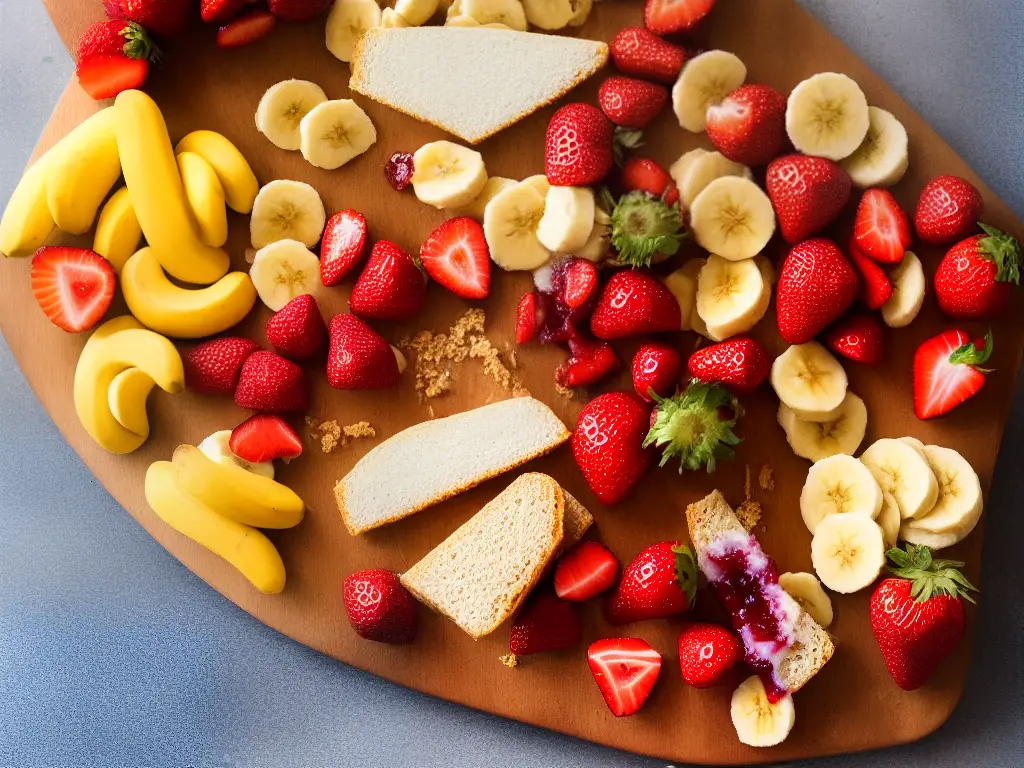
The World of Peanut Butter and Jelly
Smooth peanut butter is typically made from roasted peanuts that have been ground into a smooth paste, with added oils or sweeteners to enhance its flavor and texture. Major brands like Jif, Skippy, and Peter Pan offer smooth peanut butter, often with options like reduced fat or additional honey for added flavor. On the other hand, crunchy peanut butter contains bits of peanut chunks to provide a contrasting texture in comparison to its smooth counterpart. Many people enjoy this variation, as it offers an added dimension to the peanut butter experience. These different types of peanut butter can greatly influence the taste and texture of a peanut butter and jelly sandwich, appealing to various individual preferences.
Jelly, which is a fruit spread made from fruit juice, sugar, and pectin, also comes in a multitude of flavors and varieties. The most common and traditional jelly for peanut butter and jelly sandwiches is grape jelly. Other popular flavors include strawberry, raspberry, and blackberry, each providing a unique taste to complement the peanut butter. Additionally, some artisanal jelly brands incorporate unique fruit combinations and added spices to offer a more sophisticated flavor profile.
Aside from the traditional store-bought peanut butter and jellies, there are also natural and homemade alternatives available. Natural peanut butter often contains fewer additives and may require stirring to incorporate the natural oils back into the spread. This type of peanut butter is considered healthier since it typically contains less sugar and no hydrogenated oils. For those looking to experiment with flavors or avoid preservatives, homemade jams and jellies can be made using fresh fruit, sugar, and pectin. Homemade fruit spreads allow for more creative and personal customization, as one can adjust the sweetness or flavor combination to their preference.
With the growing focus on healthier and organic food options, almond and cashew butter have gained popularity as alternatives to traditional peanut butter. These nut butters also come in creamy and chunky varieties, and can be found in both natural and conventional types at most grocery stores. While almond and cashew butter may have a higher price point compared to peanut butter, they are considered to be nutritionally dense and a source of healthy fats, making them an appealing alternative for health-conscious consumers.
Experimenting with different types of peanut butter and jelly can lead to discovering new flavor combinations and textures for the ultimate sandwich experience. A combination of natural peanut butter with an artisanal fruit spread will result in a healthier and more unique sandwich. Alternatively, pairing cashew or almond butter with homemade preserves will offer a different and nutritious twist on the classic peanut butter and jelly. The possibilities are endless when it comes to the wide array of nut butters and fruit spreads available, so don’t hesitate to explore and indulge in your favorite combinations.
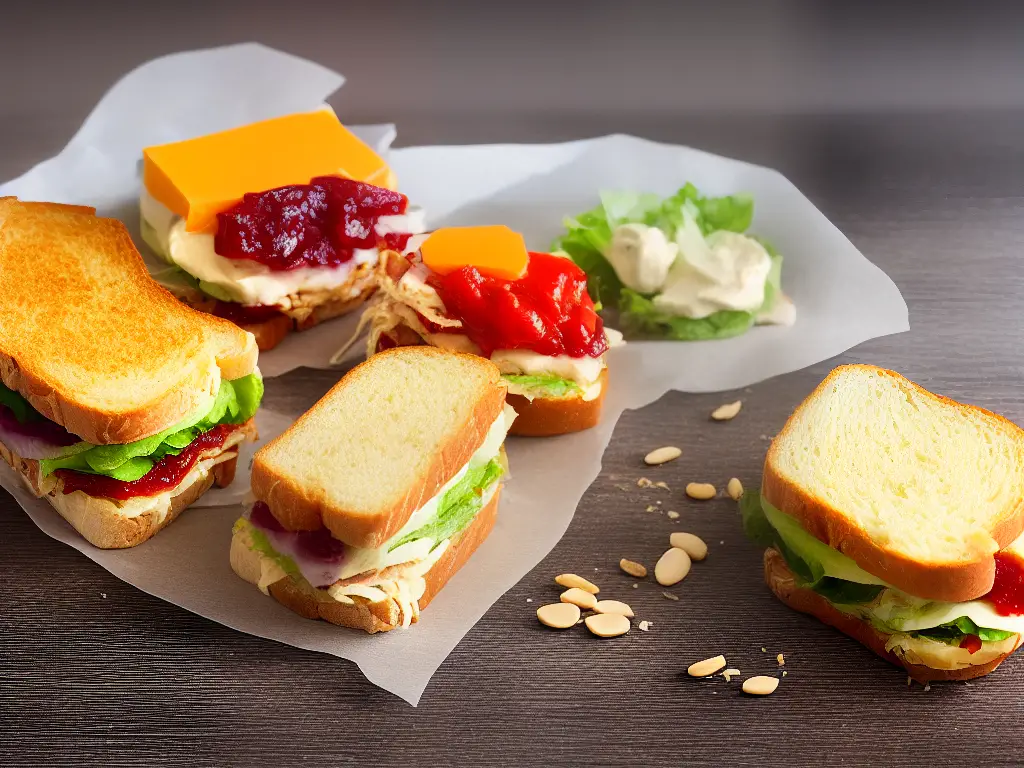
The Nutritional Benefits of Peanut Butter and Jelly
Not only do these variations offer exciting flavors, but peanut butter itself is a highly nutritious food, prized for its high protein content. Just two tablespoons of peanut butter contain about 8 grams of protein, making it an excellent source of this macronutrient for vegetarians and vegans. Peanut butter is also rich in healthy fats such as monounsaturated and polyunsaturated fats, which can help improve heart health. Moreover, peanut butter is a significant source of essential vitamins and minerals such as vitamin E, zinc, and magnesium, which contribute to overall health and well-being. By exploring different pairings of nut butters and fruit spreads, you can create delicious and nutritious sandwiches that cater to your taste and dietary preferences.
Despite its high-calorie content, peanut butter can be part of a healthy diet when consumed in moderation. The combination of protein, healthy fats, and fiber in peanut butter can help promote feelings of fullness and provide sustained energy throughout the day. Additionally, some research has suggested that moderate consumption of nuts, including peanuts, can lower the risk of heart disease and aid in weight management, as long as portion sizes are controlled.
Jelly, on the other hand, is often made from fruit juice, sugar, and pectin and has a different nutritional profile than peanut butter. While most jellies contain some vitamins and minerals found in the fruits they are made from, the levels are usually lower due to the processing methods. Jellies do contain small amounts of essential nutrients such as vitamin C and potassium but are most commonly associated with their sugar content. Unlike peanut butter, jelly is primarily a source of simple sugars, which can cause a rapid spike in blood sugar levels if consumed in large quantities.
When it comes to health benefits, the combination of peanut butter and jelly is interesting. While peanut butter can provide healthier nutrients, jelly is often criticized for its high sugar content. However, making the right choice of jelly can maximize the nutritional benefits of a peanut butter and jelly sandwich. Opting for a jelly made from whole fruits with minimal added sugars can help reduce the overall sugar content of the sandwich, providing a more balanced and nutritious option.
When incorporating peanut butter and jelly into your diet, it is essential to consider overall consumption levels and portion sizes. The nutritional benefits of peanut butter can contribute to better health when consumed in moderation; however, it is vital to avoid overeating due to its high-calorie content. Similarly, while jelly can add flavor and texture to the peanut butter and jelly combination, selecting a lower-sugar option allows you to enjoy the taste without compromising your dietary goals. Balancing these nutritious and delicious ingredients can support a well-rounded and satisfying approach to your daily meals.

The Importance of Allergy Awareness When Consuming Peanut Butter and Jelly
In addition to consumption habits, allergies and safety concerns must be taken into consideration for peanut butter and jelly. Peanut allergies are among the most common food allergies, and according to Food Allergy Research & Education (FARE), approximately 1.8 million people in the United States are allergic to peanuts. It is essential for those with a peanut allergy to avoid peanut products entirely, as even minimal exposure can lead to severe and potentially life-threatening reactions, such as anaphylaxis. Being mindful of these considerations will ensure that incorporating peanut butter and jelly into your diet is both enjoyable and safe.
In addition to peanut allergies, some individuals may also be allergic to ingredients in jelly or other spreads used in peanut butter and jelly sandwiches. For example, individuals with a fruit allergy may react to certain jellies made from fruits they are allergic to, while others might be allergic to specific ingredients, such as preservatives or food coloring. It is crucial for individuals with food allergies to check the labels of any spreads or jellies they plan to consume and be mindful of cross-contamination risks.
For those who cannot consume peanut butter due to allergies, there are numerous alternatives available. These alternatives can be made from different types of nuts or seeds and are often specifically marketed as peanut-free options. Popular choices include almond butter, sunflower seed butter, and soy nut butter. As for jelly substitutions, there are many fruit-free spreads available for those with fruit allergies, such as chocolate spreads, marshmallow fluff, or even spreads made from vegetables like pumpkin or sweet potato.
In environments such as schools or workplaces where individuals with peanut or other food allergies are present, it may be necessary to implement safety guidelines for managing these allergies. Such guidelines could include designated allergen-free zones, in which the consumption of peanut butter, jelly, or other allergenic foods is prohibited, as well as routine cleaning procedures to minimize cross-contamination risks. Educating staff and students on the signs of allergic reactions and how to use epinephrine auto-injectors, such as EpiPens, can also be beneficial in preventing severe allergic reactions.
Oral immunotherapy, a method for managing peanut and related allergies, involves gradually introducing small, increasing amounts of the allergenic food to an individual’s diet under medical supervision. This approach aims to desensitize the individual to the food allergen over time, reducing the severity of their reactions. However, this approach is still relatively new and should only be attempted under the guidance of a qualified allergist. With this knowledge, we can appreciate the delicious combination of peanut butter and jelly, consumed widely by those who do not suffer from such allergies.
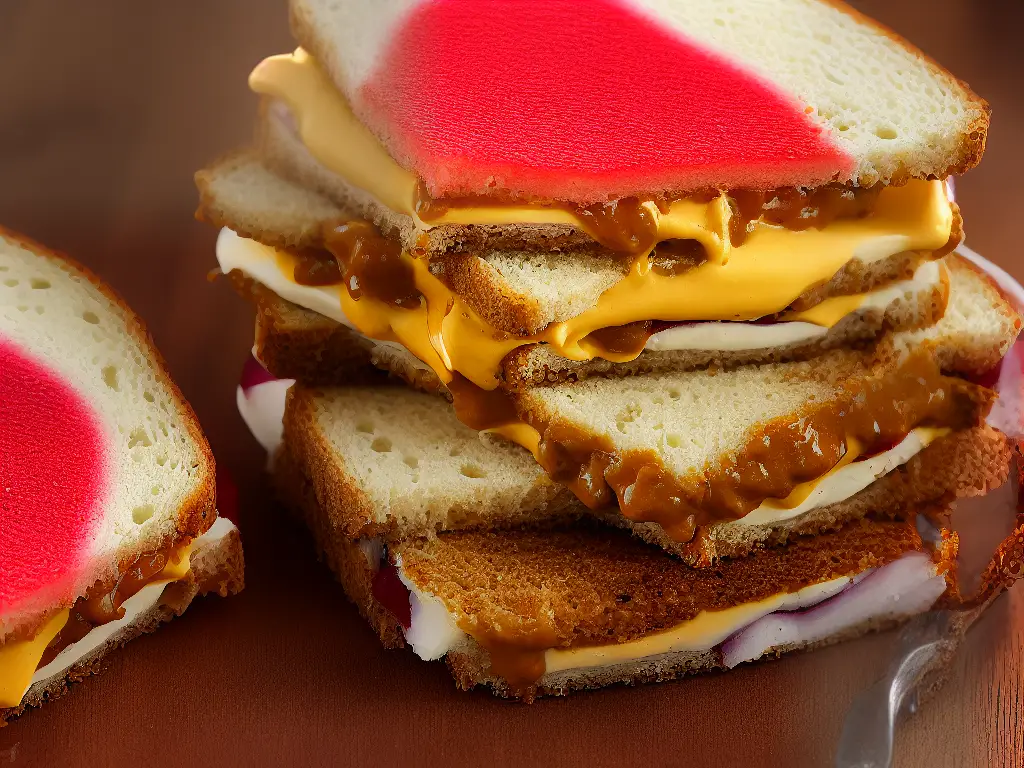
Fun Ways to Enjoy Peanut Butter and Jelly
A classic example of combining peanut butter and jelly is in a timeless sandwich, enjoyed by many who do not have allergies to these ingredients. This simple yet delightful meal consists of spreading smooth or chunky peanut butter on one slice of bread and your favorite jelly or jam on another, then pressing them together for a perfect blend of sweet and savory flavors. You can experiment with different bread types, such as whole wheat, sourdough, or even cinnamon raisin, and even add ingredients like bananas, honey, or bacon for a unique touch.
In addition to the traditional sandwich, many creative recipes make use of peanut butter and jelly as key ingredients. For breakfast, consider making PB&J french toast by sandwiching peanut butter and jelly between two slices of bread, then dipping them into a beaten egg mixture and cooking until golden brown. Serve with a dusting of powdered sugar or a drizzle of maple syrup. Alternatively, try baking peanut butter and jelly muffins – a delightful combination of the classic flavors in a fluffy, portable breakfast treat.
Peanut butter and jelly also find their way into unique dessert recipes. For a cool, refreshing treat, make a batch of PB&J ice cream by folding peanut butter and jelly into softened vanilla ice cream, then refreezing until firm. Or, prepare a dessert pizza using a prepared sugar cookie dough crust, spreading a layer of peanut butter over the baked cookie, then topping with spoonfuls of jelly and fresh fruit.
Taking a more novel culinary approach, peanut butter and jelly can be used as flavor enhancers in savory dishes. For example, try using peanut butter as a base for a Thai-inspired sauce with soy sauce, ginger, and garlic to pour over noodles or chicken. Finish the dish with a dollop of jelly or a drizzle of fruit-based sauce for a sweet contrast. Peanut butter can also be incorporated into marinades for grilled meats, adding depth and thickness to the sauce while the jelly provides a touch of sweetness.
Another unexpected way to incorporate peanut butter and jelly into your meals is through snack preparations. Mix peanut butter into granola or no-bake energy bites, pairing it with dried fruit like raisins or cranberries to mimic the classic flavor combination. Alternatively, use the duo as a filling for homemade truffles. You can also create a unique dip by swirling together peanut butter and jelly and serving with pretzels, apple slices, or celery for a healthier twist on the traditional snack. With so many creative possibilities, peanut butter and jelly can easily become a versatile staple in your cooking repertoire.
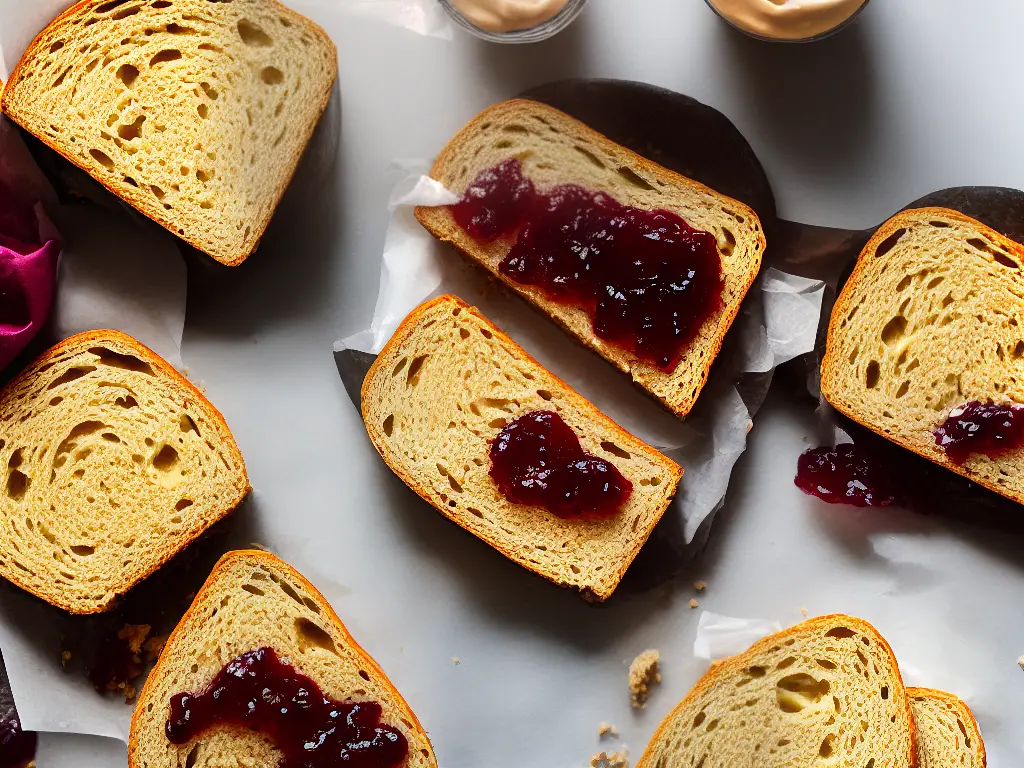
The Socio-Economic Impact of Peanut Butter and Jelly
Indeed, peanut butter and jelly hold a significant place in food culture, particularly in the United States, where it has served as a staple food item for many generations. Rooted in simplicity and convenience, these ingredients have become synonymous with easy-to-make, nutritious, and affordable snacks and meals. This widespread popularity is evident when considering that the average American will eat about 1,500 peanut butter and jelly sandwiches by the time they reach the age of 18.
Furthermore, the affordability of peanut butter and jelly in supermarkets is because of their high demand and wide availability. As a result, the market for these products is sustainable, leading to a considerable socioeconomic impact. As peanut butter and jelly continue to remain relevant in food culture, creative possibilities for their use will only grow, maintaining their status as versatile staples in our everyday lives.
In terms of job opportunities, the peanut butter and jelly market has given rise to various employment options within the food industry. Jobs in manufacturing, distribution, marketing, and sales are generated by the need to produce and sell these simple yet popular products. Companies dedicated entirely to manufacturing peanut butter or jelly contribute to local and national economies by providing jobs and stimulating commerce. Additionally, the demand for peanut butter and jelly has also led to the development of niche markets, such as all-natural, organic, or vegan options, further expanding employment opportunities.
Beyond job opportunities, the affordability and nutritional value of peanut butter and jelly serve as an essential source of nutrients for low-income households. Offering a combination of protein, healthy fats, and carbohydrates, the mixture is a relatively healthy option that can be consumed on any budget. As such, it is frequently donated to food banks and community-based hunger relief programs, providing sustenance for those who may not have consistent access to food.
The peanut butter and jelly food industry also plays a role in global trade. While peanuts are primarily produced in the United States, Russia, China, and India, jelly is often made using fruit imported from various regions, such as South America and Europe. This cross-border trade of ingredients creates a global market that supports economic growth and international cooperation.
It is essential to consider potential environmental concerns associated with peanut butter and jelly production. The cultivation of peanuts and fruits used for jelly requires significant water and land resources, contributing to deforestation and water scarcity in some regions. In recent years, concerns have arisen regarding the use of palm oil in some peanut butter brands, an ingredient linked to environmental degradation and loss of habitat for endangered species. As consumers become increasingly conscious of these issues, producers must adapt and address sustainability concerns within their supply chains to maintain their position as a socio-economic staple in food culture.
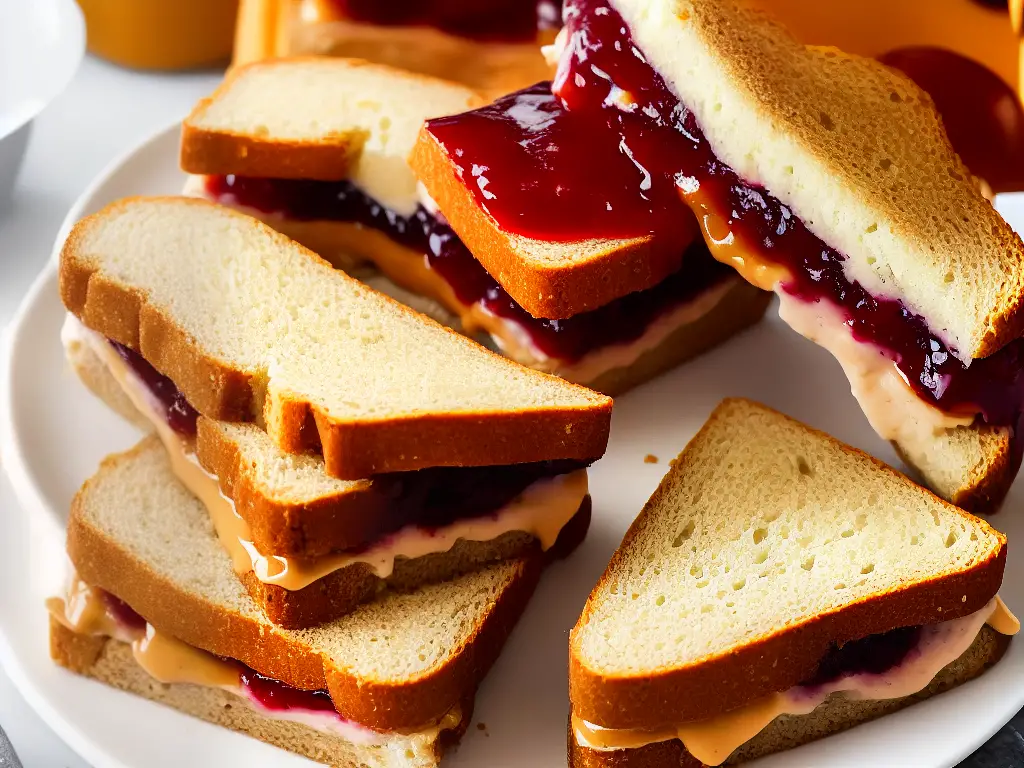
The Evolving World of Peanut Butter and Jelly
This increased consumer awareness is driving the evolution of the peanut butter and jelly market, as food scientists and companies continuously develop new flavors, healthier, and more sustainable ingredients. With a growing focus on health, new variants of peanut butter can be developed using nuts and seeds with higher nutritional value, while reducing or eliminating added sugars and unhealthy oils. Jelly and jam options can also be improved with reduced sugar content and artificial additives. In addition to improving ingredients, brands may utilize more sustainable and eco-friendly packaging solutions to reduce their carbon footprint and appeal to environmentally conscious consumers.
Another major trend in peanut butter and jelly is the emergence of nut-free spreads, which aim to cater to those with nut allergies. Whether made from sunflower seeds, soybeans, or other alternative sources, these nut-free spreads are becoming increasingly popular, both for those with allergies and for parents who must adhere to school-provided guidelines for safe classroom snacks. As the market for these alternative spreads grows, we can expect to see more options and better representation on store shelves, making it easier for consumers to find a suitable substitute.
In recent years, there has also been a surge of interest in creating peanut butter and jelly products that cater to different dietary preferences, including vegan, gluten-free, and keto-friendly options. These products allow consumers with specific dietary needs to enjoy the nostalgic flavors of PB&J without compromising their nutritional goals. With further advancements in food technology, manufacturers may even develop options that more closely imitate traditional peanut butter and jelly flavors and textures while adhering to specific dietary requirements.
Part of the appeal of peanut butter and jelly is its convenience, and companies are starting to capitalize on this by launching innovative, ready-to-eat snacks that feature the classic flavor combination. From prepackaged PB&J sandwiches that can be eaten on the go, to peanut butter and jelly protein bars, we can expect to see even more unique and convenient iterations of this time-honored pairing. This broadening of the PB&J category will likely create opportunities for businesses to develop new product lines centered around convenience, portability, and novelty.
Lastly, the realm of peanut butter and jelly will continue to evolve through collaborations with other popular food trends and flavor combinations. As younger generations grow up with a love of PB&J, it’s only natural for them to combine these flavors with other iconic food pairings, such as peanut butter and chocolate or raspberry jam and cream cheese. These novel flavor combinations have the potential to inspire new food products that could further expand the peanut butter and jelly family, ultimately allowing for even more diversity and creativity within the culinary space.
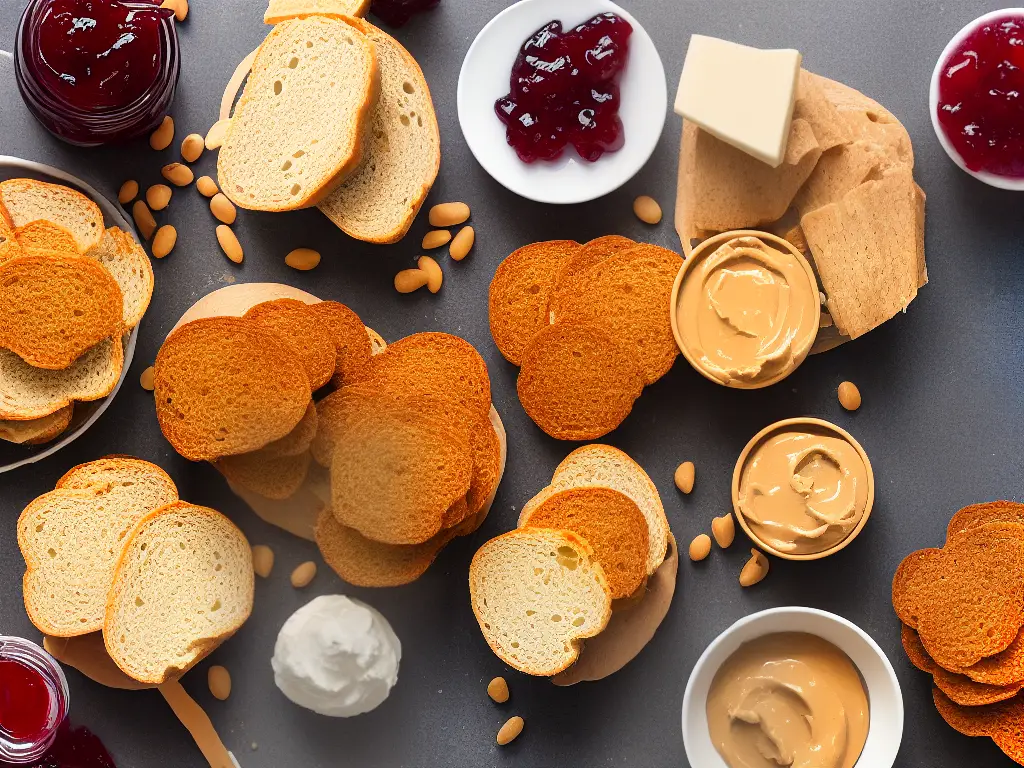
From humble beginnings to becoming a global sensation, peanut butter and jelly have transcended the realm of simple sandwiches, revolutionizing taste palates and creating a lasting impact on food cultures. Equipped with the knowledge of the various types, nutritional values, and creative uses of peanut butter and jelly, one can truly appreciate the influence these ingredients have on countless lives across communities. As safety concerns and allergy research progress, we can anticipate potential developments and innovations that will shape the future of this endearing and comforting food combination. So, indulge in the world of peanut butter and jelly, an iconic and culinary adventure that will truly satisfy your taste buds and curiosity.